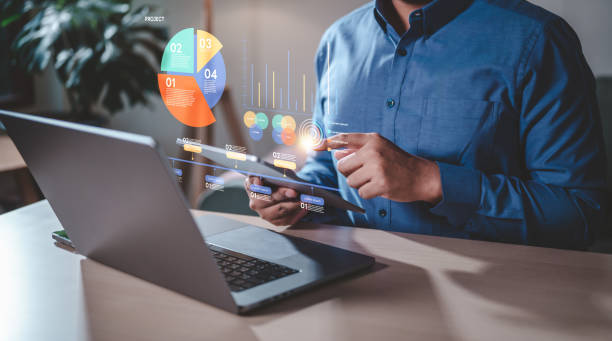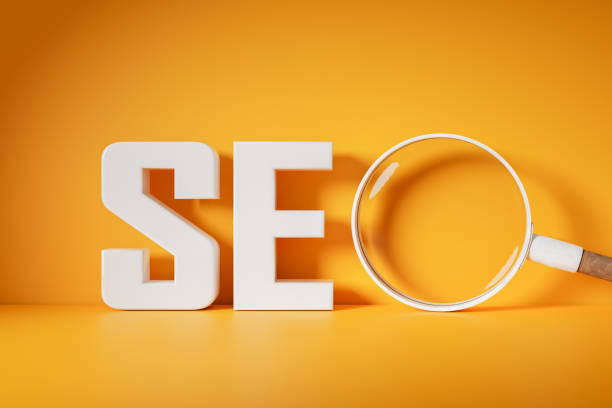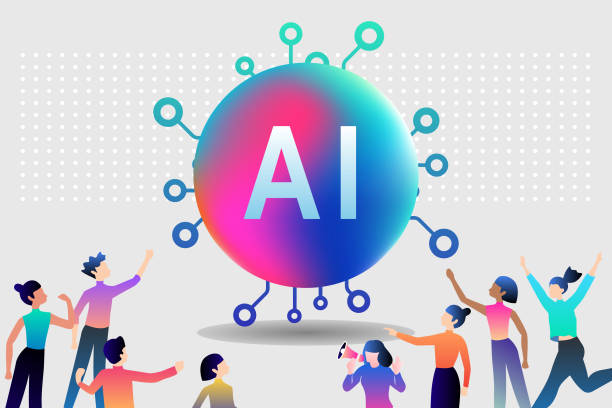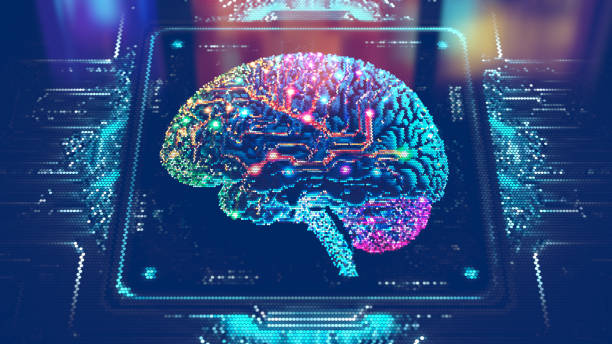Comprehensive Introduction to SEO and Its Importance

In today’s digital world, where the competition for visibility has peaked, #SEO (Search Engine Optimization) has become one of the most vital tools for success for any business and website.
SEO is essentially a set of processes and techniques used to improve your website’s ranking in organic (non-paid) search engine results like Google, Bing, and Yahoo.
The main goal of SEO is to increase quality and targeted traffic to your website.
The higher your website’s ranking in search results, the greater the chance of being seen by users, and consequently, more opportunities arise to attract customers and grow your business.
This process is a long-term investment that brings stable and reliable results.
Success in SEO requires a deep understanding of how search engine algorithms work, user needs, and how to produce valuable content.
This educational and step-by-step approach will familiarize you with key SEO concepts and effective strategies.
Understanding the importance of SEO is essential for anyone looking for a powerful online presence.
Did you know your company’s website is the first point of contact for 75% of potential customers?
Your website is the face of your brand. With RasaWeb‘s corporate website design services, build an online presence that earns customer trust.
✅ Create a professional and lasting image for your brand
✅ Attract target customers and increase online credibility
⚡ Get a free consultation from RasaWeb experts!
Types of SEO: On-Page and Off-Page
![]()
Search Engine Optimization (SEO) can be divided into two main parts: On-Page SEO and Off-Page SEO.
Each of these sections includes a set of techniques that help improve website ranking.
On-Page SEO refers to all the actions you take within your website to improve its ranking in searches.
These actions include content optimization, proper keyword selection and usage, optimization of title tags (Title Tags) and meta descriptions (Meta Descriptions), friendly URL structure, page loading speed, and suitable user experience (UX).
The goal of On-Page SEO is to provide high-quality and relevant content for users and search engines so that algorithms can easily understand your page’s topic and value.
Producing explanatory and structured content for users is one of the main pillars of this section.
In contrast, Off-Page SEO refers to activities performed outside your website to improve its authority and ranking.
The most important aspect of Off-Page SEO is Link Building; that is, obtaining backlinks (Backlink) from other websites.
Every quality backlink acts as a vote of confidence from other websites to your site, which increases its credibility in the eyes of search engines.
Social media activity, influencer marketing, and brand mentions are also effective factors in Off-Page SEO.
The successful combination of these two types of SEO is the cornerstone of a strong optimization strategy.
Content Optimization for SEO and Keywords

Content is king; this statement holds truer than ever in the world of SEO.
Content optimization for SEO is a process by which your website’s content is produced and edited in a way that is both valuable to users and easily understood and ranked by search engines.
The starting point of this process is keyword research.
Identifying the words your target audience searches for to find information, products, or services related to your business is the first and fundamental step.
Keywords should not only have a suitable search volume but also align with user search intent.
After identifying keywords, it’s time to produce high-quality content.
This content can be in the form of specialized articles, blog posts, infographics, videos, or any other format.
Your content must be comprehensive, accurate, unique, and user-friendly.
Natural and logical use of keywords in titles, headings, body text, and image descriptions is essential.
Avoiding Keyword Stuffing is crucial, as it can lead to penalties from search engines.
Also, special attention should be paid to content readability; using short sentences, small paragraphs, lists, and relevant images helps improve user experience.
Thought-provoking content that encourages the audience to think and interact can increase engagement rate and send positive signals to search engines.
Below is a table of content types and their SEO applications:
| Content Type | SEO Goal | Examples |
|---|---|---|
| Educational Content | Answering user questions, increasing authority | Guides, How-to articles, Step-by-step tutorials |
| Explanatory Content | Clarifying complex concepts, improving understanding | Definitions, Glossaries, Explanatory articles |
| News/Timely Content | Attracting traffic from current trends, increasing content freshness | Industry news, New analyses, Event reports |
| Entertaining Content | Increasing engagement rate, social sharing | Quizzes, Contests, Engaging stories |
Attention to content SEO and its continuous updating plays a key role in maintaining and improving your ranking in search results.
Technical Aspects of SEO and Its Role in Ranking

Alongside quality content, the technical aspects of SEO are also highly important and can have a direct impact on your website’s ranking.
Technical SEO includes optimizing the overall website structure, page loading speed, mobile compatibility, and crawlability and indexability by search engines.
A technically strong website provides a better user experience and makes it easier for search engines to understand and rank content.
Page loading speed is one of the vital factors in technical SEO.
Users expect web pages to load quickly, and if they are slow, the likelihood of users leaving the site increases.
Google also gives positive ratings to faster websites.
Using CDNs, optimizing images, compressing files, and employing caching are among the methods to improve speed.
Mobile-Friendliness is also now a very important ranking factor, especially given Google’s Mobile-First Indexing approach.
Your website must have a Responsive Design to display correctly on any device.
Logical and shorter URL structures, correct use of Canonical Tags to prevent duplicate content, and creation of an XML Sitemap (XML Sitemap) to help search engines crawl and index all website pages, are other technical SEO aspects that require specialized attention.
These elements together ensure the stability and strength of an SEO strategy.
Are you tired of your e-commerce site having visitors but no sales? RasaWeb solves your core problem with professional e-commerce website design!
✅ Significant increase in sales with targeted design
✅ Flawless user experience for your customers
⚡ Get a free consultation!
Link Building and Domain Authority Improvement

Link Building is one of the important pillars of Off-Page SEO, meaning the process of acquiring incoming links (backlinks) from other websites to your website.
Search engines consider backlinks as a vote of confidence from other websites for your content.
The more numerous and higher quality your backlinks are, the higher your website’s Domain Authority will be in the eyes of search engines, and consequently, you will achieve a better ranking in search results.
However, not all links are equal.
A quality backlink from an authoritative website relevant to your topic is far more valuable than a link from a low-authority or irrelevant site.
Link building strategies include various methods: creating valuable and engaging content that naturally attracts links (link bait), guest posting (Guest Posting) on other websites, broken link building (Broken Link Building), participating in specialized forums, and reputable directories.
Link building should be done naturally and sustainably.
Buying links or using illicit methods (Black Hat SEO) can lead to severe penalties from Google.
The main goal of link building is not only to increase rankings but also to enhance brand authority and drive referral traffic (Referral Traffic) to your website.
This part of SEO requires patience, persistence, and a precise analytical approach to identify opportunities and track results.
A strong link building strategy can significantly elevate your position in the digital competition.
The Role of User Experience (UX) in Modern SEO

In the past, SEO was more focused on technical aspects and keywords, but with the evolution of search engine algorithms, User Experience (User Experience – UX) has become a critical ranking factor.
Google and other search engines are now increasingly focusing on how users interact with a website.
Websites that provide a positive user experience not only keep users satisfied but also send positive signals to search engines, which can lead to improved SEO rankings.
Factors such as page loading speed, mobile usability, appealing visual design, easy navigation, and relevant and organized content all impact user experience.
Low Bounce Rate, high Dwell Time, and the number of Pages per Session are among the UX metrics that search engines pay attention to.
A high bounce rate indicates that users quickly leave the site after entering, which can be a negative signal.
Providing clear guidance and simple paths for users to access needed information is a principle of UX design that indirectly affects SEO.
A website that is easily navigable and simply provides users with the information they need is likely to keep users engaged for longer and allow them to achieve their goals (such as purchasing a product or finding information).
This synergy between UX and SEO necessitates a more comprehensive and user-centric approach to website optimization.
Essential SEO Tools and Data Analysis

To succeed in SEO, theoretical knowledge alone is not enough; there is a need to use appropriate tools for analyzing, monitoring, and improving website performance.
These tools help you identify popular keywords, assess competitor performance, find technical site errors, and track your ranking progress.
Using these analytical tools is an inseparable part of a modern SEO strategy.
Google Search Console and Google Analytics are two free and essential Google tools that provide vital information about your website’s performance in search results, incoming traffic, keywords used by users, and technical site issues.
Search Console shows you how Google sees your site and allows for sitemap submission and crawling error fixes.
Analytics provides more detailed information about user behavior on the site, such as dwell time and bounce rate.
In addition to Google’s tools, paid platforms like SEMrush, Ahrefs, and Moz also offer advanced capabilities for keyword research, competitor analysis, backlink auditing, and site audits.
These tools, with their comprehensive data, assist in specialized decisions in the SEO domain and provide a guide for continuous improvement.
Understanding how to correctly use these tools and analyze their data allows you to build your strategies based on evidence rather than guesswork.
| Tool Name | Main Use | Type (Free/Paid) |
|---|---|---|
| Google Search Console | Monitoring search performance, site errors, indexing | Free |
| Google Analytics | Traffic analysis, user behavior, traffic sources | Free |
| Ahrefs | Backlink analysis, keyword research, competitor analysis | Paid |
| SEMrush | Keyword research, technical SEO, competitor analysis, advertising | Paid |
| Moz Pro | Domain analysis, keyword research, link analysis | Paid |
Mastery of these tools is a significant competitive advantage in the world of SEO.
Local SEO and Its Importance for Small Businesses

Local SEO is a branch of SEO that focuses on optimizing a business’s online presence for local search results.
This type of SEO is extremely important for businesses that have physical customers and offer their services within a specific geographical area (such as restaurants, shops, clinics, and salons).
The main goal of local SEO is for your business to appear at the top of search results when users look for products or services near their location.
The primary tool in local SEO is Google My Business (GMB).
Optimizing a GMB profile includes accurately completing business information (name, address, phone number), business hours, high-quality images, responding to customer reviews, and regularly updating news posts.
This information appears in Google’s “Local Pack” (Local Pack), which is placed at the top of local search results.
In addition to GMB, creating Citations (mentions of the business name, address, and phone number in online directories) and receiving positive customer reviews are also highly effective in local SEO.
Explanatory and specific content about local services and products, using local keywords (such as “best coffee in Tehran”), and creating location-specific pages for businesses with multiple branches are other important techniques in local SEO.
Local SEO helps small businesses gain visibility against larger competitors and attract customers, so a strong local SEO strategy can mean the difference between success and failure for many physical businesses.
Are you tired of your company’s website not meeting your expectations? With RasaWeb, design a professional website that truly represents your business.
✅ Increase new customer acquisition and sales leads
✅ Boost your brand’s credibility and trust with your audience
⚡ Get a free website design consultation!
The Future of SEO and Search Algorithm Changes
![]()
The world of SEO is a dynamic and evolving field.
Search engine algorithms like Google’s are constantly being updated and becoming more complex to provide users with the best and most relevant results.
These changes necessitate staying updated and adaptable to new trends for every SEO specialist or website owner.
Understanding the future of SEO helps us adjust our strategies for long-term success.
One of the most important future trends is Voice Search.
With the increasing use of voice assistants like Siri, Alexa, and Google Assistant, the way users search has changed, moving towards more natural and conversational language.
This requires optimizing content to answer longer, conversational queries.
Core Web Vitals and Google’s emphasis on Page Experience also indicate the increasing importance of user-centric metrics such as speed and interactivity.
The role of Artificial Intelligence (AI) in SEO is also growing.
Algorithms like BERT and MUM use AI to better understand user search intent and provide more accurate results.
This means a greater emphasis on deep, comprehensive, and high-quality content that addresses real user needs.
SEO is no longer just about keywords; it’s about fully understanding the topic and providing the best possible answer to the user’s question.
Engaging and attractive content can also keep users more involved in this competitive environment and help improve rankings.
Comprehensive SEO Strategies and Successful Implementation

A successful SEO strategy is a combination of various aspects of On-Page, Off-Page, and Technical SEO, implemented in an integrated and coordinated manner.
Success in SEO is not a one-time process, but rather requires continuous planning, execution, and monitoring.
The first step in formulating a comprehensive strategy is setting clear goals: what traffic do you want to attract? Which keywords are important to you? What conversion rate are you targeting?
After setting goals, precise keyword research and identification of opportunities for creating valuable content are carried out.
This content must not only be relevant and comprehensive but also technically optimized so that search engines can easily crawl and index it.
Technical optimization of the site includes improving speed, mobile compatibility, and a logical website structure.
Furthermore, the link building strategy should be designed to attract quality and natural backlinks from authoritative websites.
Continuous performance monitoring using SEO tools and data analysis, for identifying strengths and weaknesses and adjusting the strategy over time, is vital.
This educational and holistic approach ensures that all aspects of optimization are covered and that your website is continuously progressing.
A successful SEO strategy is a long but highly profitable path to achieving sustainable online visibility.
Frequently Asked Questions
| Question | Answer |
|---|---|
| What is SEO? | SEO, or Search Engine Optimization, is the process of increasing the quality and quantity of website traffic by improving the site’s ranking in natural (organic) search engine results like Google. |
| What are the main types of SEO? | SEO is divided into three main categories: On-Page SEO, Off-Page SEO, and Technical SEO. |
| What does On-Page SEO include? | On-Page SEO includes optimizing elements within the website, such as keywords, Title Tags, Meta Descriptions, content, URL structure, images, and internal links. |
| What is Off-Page SEO? | Off-Page SEO refers to activities outside the website that help improve its ranking, such as Backlink Building, social media marketing, and Brand Mentions. |
| What is Technical SEO? | Technical SEO involves optimizing the technical aspects of a website to help search engines crawl and index it better. This includes site speed, mobile-friendliness, site structure, Sitemaps, and the Robots.txt file. |
| What role do Keywords play in SEO? | Keywords are phrases that users enter into search engines. Proper and targeted use of relevant keywords in content and site elements helps search engines understand your page’s topic and display it for relevant searches. |
| What is a Backlink and why is it important? | A backlink, or inbound link, is a link from one website to another. Backlinks act as a “vote of confidence” from other sites for your content and play an important role in site authority and ranking improvement, especially if they are from reputable sites. |
| How does quality content affect SEO? | Quality, relevant, comprehensive, and unique content not only attracts and retains users but also signals to search engines that your page is valuable. This helps improve rankings, reduce Bounce Rate, and increase user dwell time on the site. |
| Why is site loading speed important for SEO? | Site loading speed is an important ranking factor for Google. Faster sites provide a better user experience, have lower bounce rates, and are preferred by search engines. |
| Is SEO a one-time process? | No, SEO is a continuous and long-term process. Search engine algorithms are constantly changing, competition is increasing, and site content also needs updating. Therefore, SEO requires continuous monitoring, analysis, and optimization. |
And other advertising services by RasaWeb Advertising Agency:
Smart Social Media: Revolutionize click-through rates with attractive UI design.
Smart Sales Automation: A dedicated service for digital branding growth based on precise audience targeting.
Smart Digital Advertising: Revolutionize digital branding with precise audience targeting.
Smart SEO: An effective tool for online growth through Google Ads management.
Smart Custom Software: A combination of creativity and technology to increase click-through rates using real data.
And over hundreds of other services in internet advertising, advertising consultation, and organizational solutions.
Internet Advertising | Advertising Strategy | Advertorials
Sources
Introduction to SEOSEO ChecklistSEO TrainingWhat is SEO?
? With RasaWeb Afarin, your business gets a new life in the digital world. With expertise in secure website design, search engine optimization (SEO), and online advertising campaign management, we are with you on the path to success.
📍 Tehran, Mirdamad Street, next to Bank Markazi, Southern Kazeroon Alley, Ramin Alley, No. 6




